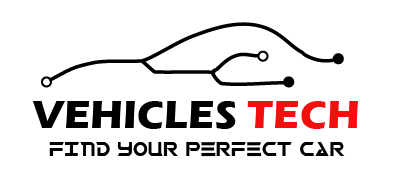Introduction: Why Inspecting a Used Car Matters
A used car purchase is a wise financial choice if it is done correctly. However, ignoring a thorough examination could result in unexpected costs and regrets in the long run. This detailed guide will go over the common problems in used car purchases, providing tips about examining everything from traditional gasoline-powered vehicles to hybrids, electric as well as autonomous vehicles. If you’re looking for problems with your used car, reviewing guidelines for inspecting your car, or learning to recognize indicators of a bad used vehicle, this guide will assist you in making an informed choice. Our aim is to assist you in mastering the Car Inspection process prior to signing any contract.
1. Common Problems in Used Car: Exterior Inspection
Before you even open the doors, your Car Inspection must begin by looking at the exterior.
- Corrosion, Rust: Verify the wheel wells and door edges, the undercarriage, and around the windshield.
- Missing Paint: Inconsistent coloring can be a sign of damage repairs.
- Scratches and Dents: Minor blemishes are normal, but the unevenness of panels could result in frame damage.
- Tire Condition: Uneven wear may indicate suspension or alignment issues.
These are typical common problems in used car exteriors that could be difficult to spot.
2. Common Problems in Used Car: Interior Checkpoints
A clean interior shows how well the vehicle is maintained.
- Dashboard Lighting: Warning lights on start-up should go off after a couple of seconds.
- Upholstery Wear: Burns, rips, or excessive wear point to naiveté.
- Smells: The smell of mildew, mold, or smoke odors can be difficult to eliminate.
- Controls Check: Test windows, A/C, lights, infotainment, and seat adjustments.
These specifics can reveal signs of a bad used car and help you prioritize your car inspection tips.
3. Problems in Used Car: Under the Hood
It is essential to check the health of your engine when it comes to identifying common problems in used car purchases:
- Oil Level and Color: Low or dirty oil indicates poor maintenance.
- Leaks: Check for any oil, coolant, or transmission fluid leaks.
- Belts and Hoses: Frays, cracks, or bulges indicate worn components.
- Battery: Swelling or corrosion on terminals may lead to future issues.
If you’re uncertain, a professional Car Inspection can reveal the root of used car issues.
4. Common Problems in Used Car: Test Drive Inspection
Nothing reveals the common problems in used car models like a test drive:
- Steering: Should be smooth, with no vibrations.
- Braking: No grinding sounds, long stopping distances, or soft pedals.
- Transmission: Smooth gear shifting without jerks or delays.
- Suspension: Pay attention to knocking noises or excessive bouncing.
These driving signals are crucial in the detection of signs of a bad used car.
5. Common Problems in Used Car: Electric Vehicles (EVs)
Car Inspection of EVs focuses on battery health and electronics:
- Battery Life: Request a battery report. Low range may be a sign of the need for a costly replacement.
- Charge Ports: Check for corrosion and damaged pins.
- Software Updates: Outdated software may reduce performance.
- Cooling Systems: EVs often contain cooling systems for batteries. Make sure to check fluid levels and functionality.
Neglecting these aspects could lead to serious used car issues later on.
6. Common Problems in Used Car: Hybrid Vehicle Inspection
Hybrid cars combine electric and gas systems, so their Car Inspection is more thorough:
- Condition of the Battery Pack: Like EVs, hybrid batteries can be costly to replace.
- Regenerative Braking: Check how well it operates.
- Engine Start/Stop Behavior: Should transition seamlessly between electric and gas modes.
- Fluid Checks: Both combustion and electric systems require inspection.
Common problems in used car hybrids often relate to the lack of maintenance on both systems.
7. Common Problems in Used Car: Autonomous Vehicle Inspection
Inspection of autonomous or semi-autonomous vehicles requires a technology-driven approach:
- Sensor Calibration: LIDAR, radar, and cameras must work properly.
- Software Functions: Check if systems are up-to-date and responsive.
- Control System Testing: Lane assist, emergency braking, and autopilot should function as expected.
- Service History: Sensor and software systems should have documented service logs.
These complex systems can conceal subtle signs of a bad used car, especially if AI components fail.
8. Problems in Used Car: Paperwork Inspection
Before purchasing, be sure to check:
- Title Status: Avoid salvage or rebuilt titles.
- Service History: Look for consistent documentation of maintenance.
- Accident Reports: Use services like Carfax.
- Recalls: Verify that recalls have been addressed.
Paperwork exposes the common problems in used car purchases that physical inspections could overlook.
9. Common Problems in Used Car: Get a Professional Inspection
Employ a certified mechanic or vehicle inspector to perform an in-depth Car Inspection:
- They use tools and experience to find hidden used car issues.
- Some companies offer mobile inspections at the seller’s location.
- Though costs vary, it can save thousands by recognizing signs of a bad used car.
10: Final Tips Before Purchase
- Don’t Rush: Walk away if something doesn’t feel right.
- Trust Your Instincts: If the deal seems too good, do more research.
- Compare Similar Models: Review and reliability ratings.
- Negotiate Based on Findings: Use your Car Inspection results to lower the price.
Conclusion: Smart Buying Starts with Smart Inspecting
Knowing the common problems in used car choices—whether it’s a gasoline-powered sedan, electric, hybrid, or autonomous vehicle—allows you to make smart decisions. From checking for oil leaks and rust to testing the latest driver-assistance systems, a complete Car Inspection is your best defense against future regrets.
Use these car inspection tips to identify used car issues, avoid signs of a bad used car, and ensure your next car is safe, reliable, and worth every penny. Whether you’re buying your first car or upgrading to a smarter vehicle, this guide empowers you to make an informed decision.
